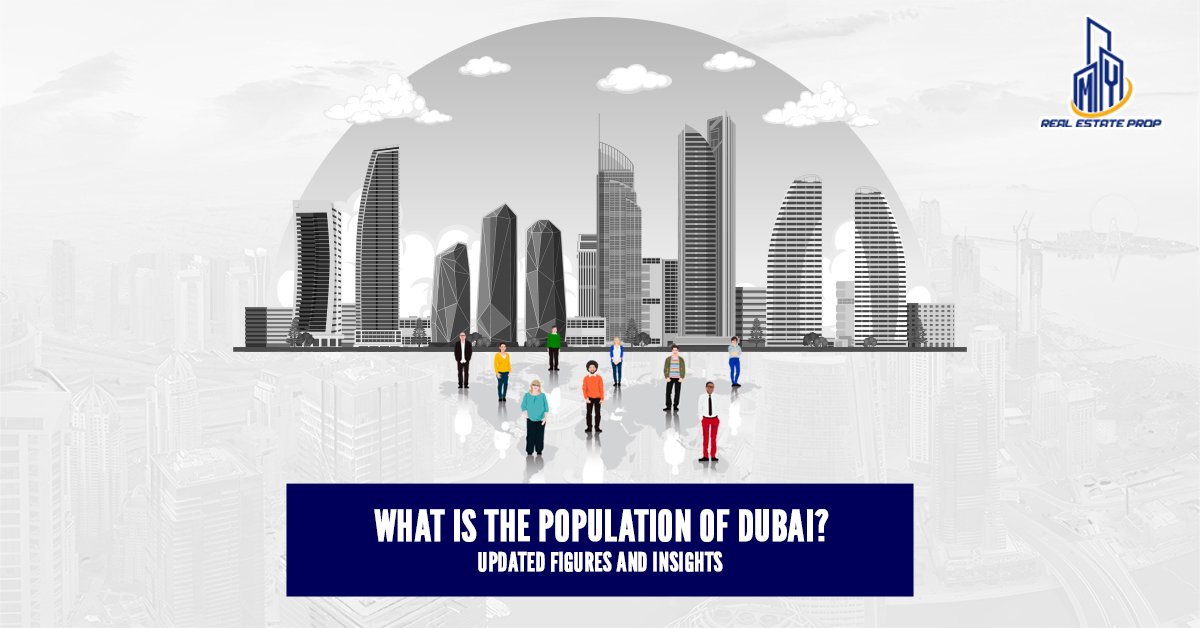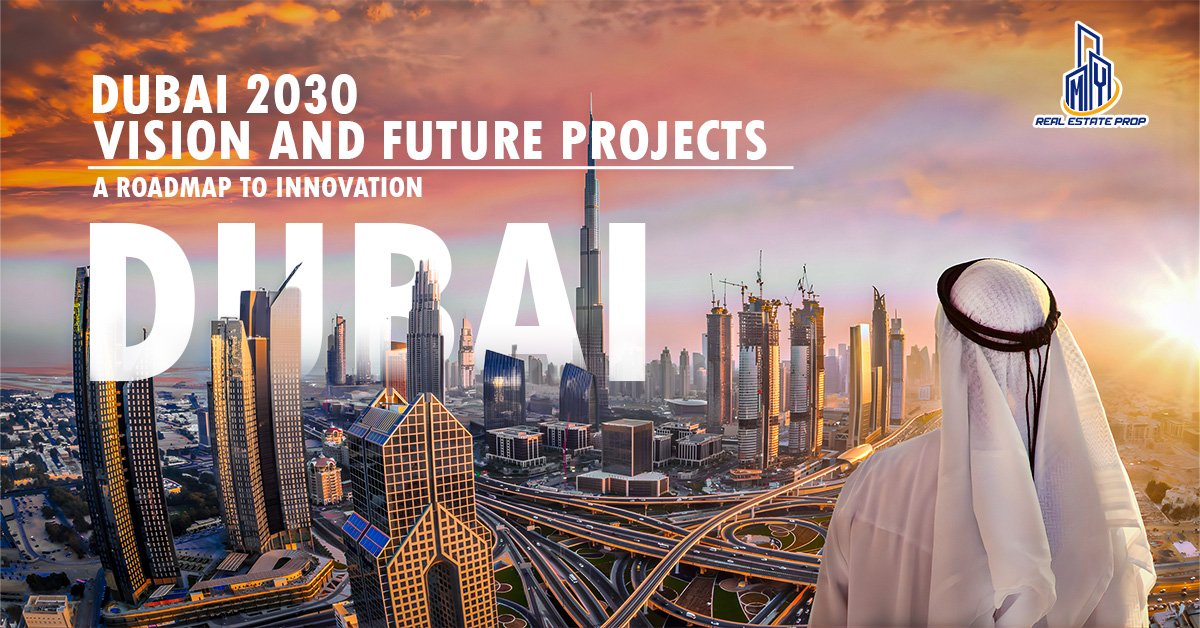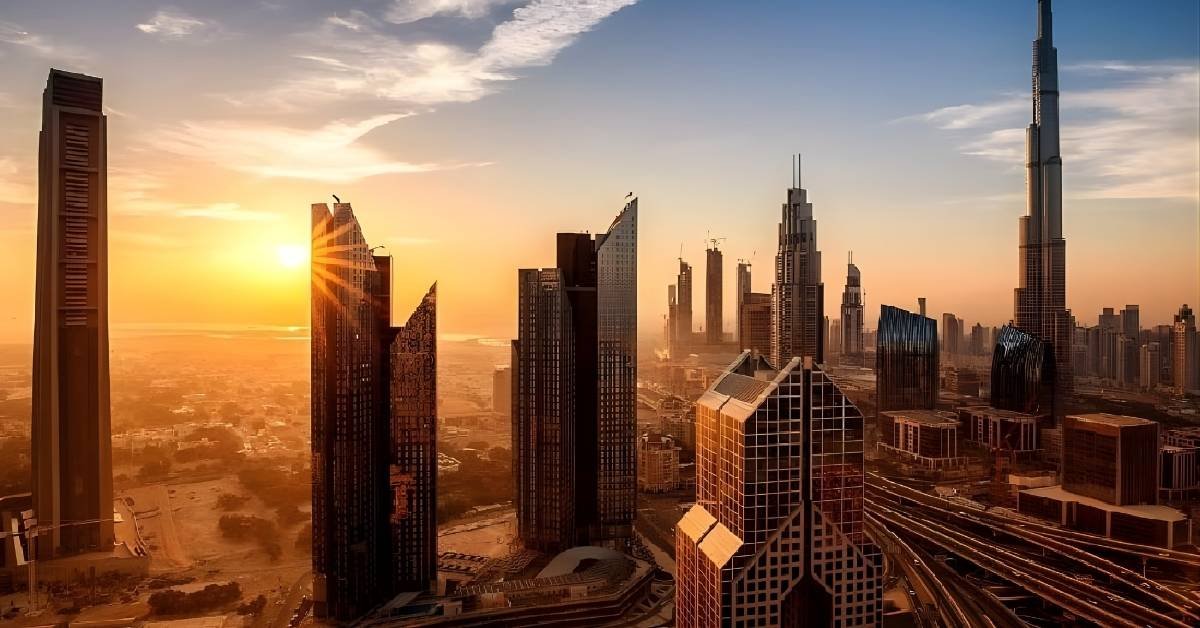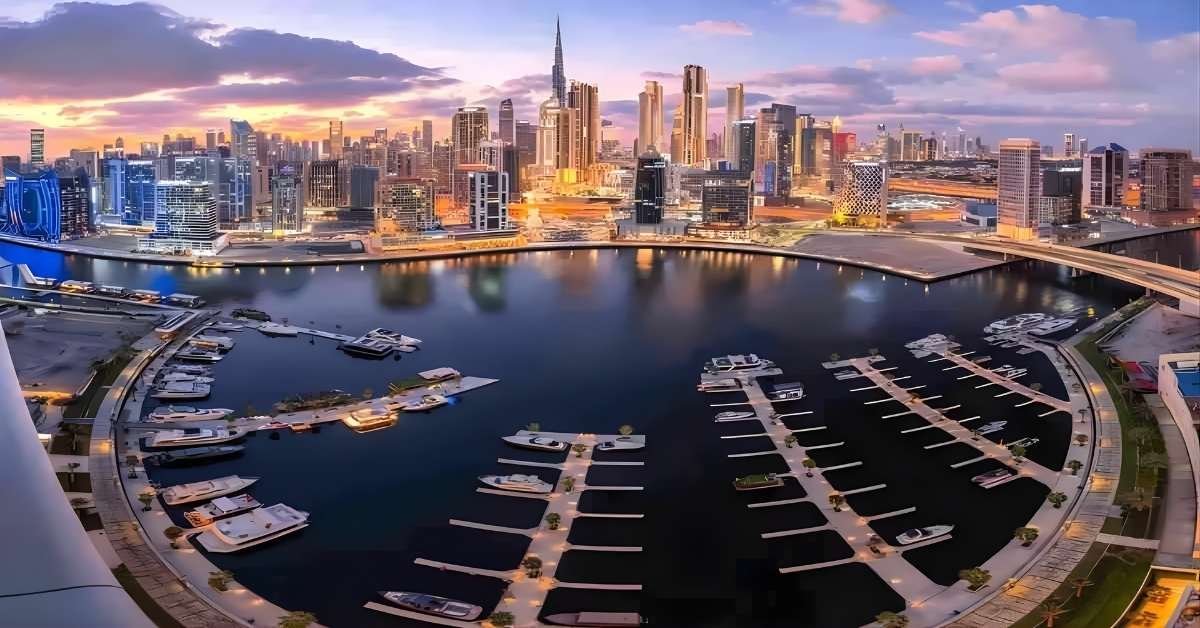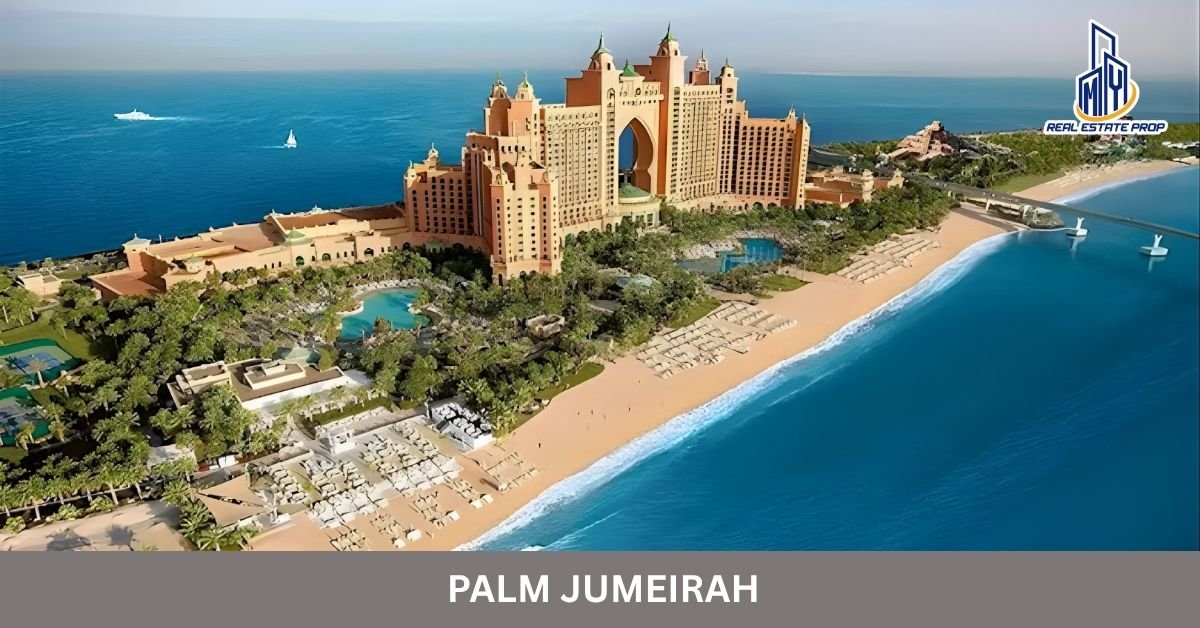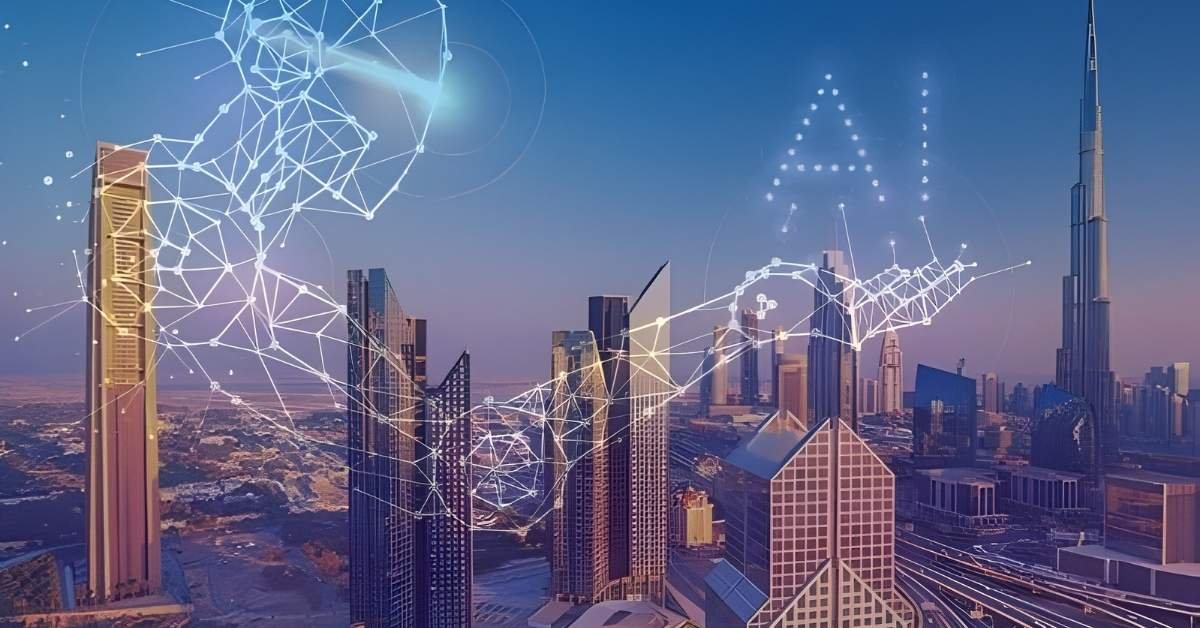The city’s population continues to surge, driven by record-breaking migration, booming business opportunities, and world-class infrastructure. What Is the Population of Dubai today is more than just a number it’s a reflection of its unstoppable growth and global appeal. This article explores the latest population figures, growth trends, and key insights that define Dubai’s dynamic demographic landscape, offering a clear picture of who lives in this ever-evolving city and where it’s headed next.
Table of Contents
ToggleWhy Dubai’s Population Keeps Growing Every Year?
Dubai’s population isn’t just growing, it’s thriving at a pace that few global cities can match. The city has transformed into a magnet for opportunity, drawing people from every corner of the world. From its booming economy to its unmatched lifestyle, there are several factors fueling this steady rise.
- Employment opportunities
With sectors like technology, finance, tourism, and real estate constantly expanding, professionals from Asia, Europe, and Africa continue to relocate here in search of better careers and higher living standards.
- Government policy
Initiatives such as the Golden Visa, Green Visa, and remote work programs have made it easier for entrepreneurs, skilled professionals, and even freelancers to call Dubai home for the long term.
- Lifestyle appeal
Also plays a major role. Safe streets, luxury amenities,
world-class healthcare, and tax-free income make it an attractive destination for families and individuals alike. The city’s year-round events, cosmopolitan culture, and growing sustainability focus continue to enhance its global reputation.
Dubai Demographics: Nationalities, Age, and Workforce Structure
Dubai’s demographics perfectly capture its identity as a melting pot of cultures and talent. The city’s population is made up of people from more than 200 nationalities, working together in one of the world’s most diverse urban environments.
1. Nationalities and Expat Composition
A striking feature of Dubai’s population is its expatriate majority, with around 88% of residents being foreign nationals. The largest communities come from India, Pakistan, Bangladesh, the Philippines, and Egypt, followed by professionals from the UK, Europe, and Africa. Emirati citizens make up roughly 12% of the population, a small but central part of the city’s leadership and heritage.
2. Age Distribution and Workforce Dynamics
Dubai’s population is young and dynamic. Nearly 70% of residents are between 25 and 44 years old, forming the backbone of the city’s workforce. This youthful age group powers Dubai’s economy across industries like technology, logistics, construction, hospitality, and finance.
3. Workforce Structure and Employment Trends
Dubai’s workforce is known for its skill diversity. While a large segment is engaged in construction, retail, and transport, there’s a growing shift toward digital services, AI, and green economy sectors. The government’s vision for a knowledge-driven economy is steadily reshaping employment trends, creating new opportunities for skilled expatriates and Emiratis alike.
Factors Driving Dubai’s Rapid Population Growth
Dubai’s remarkable population surge is no coincidence; it’s the result of strategic economic planning, global talent attraction, and a vision for inclusive development. Several key factors continue to drive the city’s rapid demographic expansion year after year.
1. Economic Opportunities and Job Creation
Dubai’s diversified economy remains the top magnet for migration. Once reliant on oil, the city has expanded into industries like finance, tourism, logistics, technology, and real estate. Thousands of multinational companies operate here, attracting professionals from around the world who seek career growth and tax-free income.
2. Business-Friendly Policies and Visas
Initiatives like the Golden Visa, Green Visa, and Freelance Permit have redefined Dubai’s residency landscape. These long-term programs allow skilled professionals, investors, and entrepreneurs to settle with greater stability, directly increasing the city’s permanent population base.
3. Global Connectivity and Infrastructure
Dubai’s strategic location connecting East and West and its world-class infrastructure play a massive role in population growth. With Dubai International Airport being one of the busiest globally and seamless access to 200+ destinations, the city is a natural magnet for global citizens.
4. Real Estate Expansion and Affordable Living Options
The continuous development of residential communities such as Dubai Hills, Jumeirah Village Circle, and DAMAC Lagoons has encouraged more people to move and stay long-term. From luxury penthouses to mid-range apartments, Dubai caters to every demographic families, professionals, and investors alike.
5. Lifestyle Appeal and Safety
Ranked among the safest cities in the world, Dubai offers a high standard of living, quality healthcare, and world-class education. Its mix of modern luxury, cultural diversity, and leisure experiences (from beaches to theme parks) attracts both residents and tourists looking to make it home.
Population Density and Urban Distribution
Dubai’s population is not only large but also strategically distributed across a city designed for balanced urban growth. Every district in Dubai tells a different story from bustling business zones to peaceful suburban neighborhoods creating a vibrant mix of residential, commercial, and cultural communities.
1. Population Density Overview
As of 2025, Dubai’s population density averages around 860 people per square kilometer, but this figure varies greatly depending on the area. Highly urbanized zones like Bur Dubai, Deira, and Business Bay experience densities far above the average, while newer master-planned communities on the outskirts offer more open space and lower density.
2. High-Density Areas
Central districts such as Downtown Dubai, Dubai Marina, and Jumeirah Lake Towers (JLT) are home to a mix of professionals and expatriates. These neighborhoods feature high-rise towers, mixed-use developments, and close proximity to offices and entertainment hubs making them hotspots for singles and young couples.
3. Medium-Density Areas
Communities like Al Barsha, Jumeirah Village Circle (JVC), and Mirdif represent a balanced density level. These areas attract both families and working professionals due to their accessibility, affordability, and presence of schools and healthcare facilities.
4. Low-Density and Suburban Areas
On the other end of the spectrum, suburban zones such as Arabian Ranches, Dubai Hills Estate, and DAMAC Hills are designed for families seeking spacious villas, parks, and a quieter lifestyle. The city’s urban planning ensures that as population grows, these outer areas continue to expand sustainably.
5. Urban Planning and Future Distribution
Dubai’s 2040 Urban Master Plan divides the city into five major zones each focused on a specific function such as business, leisure, or housing. This ensures that population growth aligns with infrastructure development, reducing congestion while maintaining quality of life.
Dubai Population vs Other Emirates and Global Cities
| City / Emirate | Population |
| Dubai | 3.7 million |
| Abu Dhabi | 1.7 million |
| Sharjah | 1.5 million |
| Doha (Qatar) | 2.3 million |
| Singapore | 5.9 million |
| Hong Kong | 7.3 million |
| London | 9.6 million |
| New York City | 8.9 million |
How Dubai Ranks Globally in Urban Population Density?
Dubai’s urban landscape stands as a unique blend of high-density living and strategic city planning, a rare combination among major global cities. While its population has surged past 3.7 million, the emirate’s well-organized infrastructure allows it to sustain growth without overwhelming its urban systems.
1. Dubai’s Density in Numbers
As of 2025, Dubai’s average population density is approximately 860 people per square kilometer lower than traditional megacities like Mumbai (32,000/km²) or Hong Kong (6,800/km²), but higher than Abu Dhabi, which maintains vast stretches of desert and lower residential clustering. This balance gives Dubai the advantage of urban efficiency without congestion, maintaining spaciousness despite rapid demographic expansion.
2. Comparison with Global Cities
Globally, Dubai ranks as a moderately dense urban city, competing closely with metropolitan hubs like Los Angeles and Singapore. However, its vertical skyline featuring areas like Business Bay, Dubai Marina, and JLT contributes to concentrated density pockets that rival some of the world’s most populated business districts.
3. The Role of Planning and Innovation
Unlike cities that expanded organically, Dubai’s growth has been deliberately engineered. Master-planned zones, sustainable housing layouts, and continuous public transport upgrades (like the Dubai Metro and upcoming Blue Line) help the city manage density smartly.
4. Looking Ahead
Under the Dubai 2040 Urban Master Plan, population clusters are expected to redistribute evenly across five key centers Deira/Bur Dubai, Downtown/Business Bay, Marina/JLT, Expo City, and Silicon Oasis. This approach will ensure that future density increases remain sustainable and livable.
What Dubai’s Population Growth Means for Investors and Residents?
Dubai’s fast-growing population is more than just a demographic trend it’s a signal of expanding opportunities for both investors and residents. Each year, the rising number of people choosing to live and work in Dubai reshapes its real estate market, business landscape, and overall lifestyle ecosystem.
1. Real Estate Demand and Property Value Growth
As more expatriates and families settle in the city, demand for housing continues to surge. This has led to consistent appreciation in property prices and higher rental yields, especially in areas like Dubai Hills Estate, Business Bay, and Jumeirah Village Circle. Investors benefit from stable rental income, while homeowners enjoy rising capital value.
2. Retail and Consumer Market Expansion
A growing population naturally means more consumers. This fuels Dubai’s retail, e-commerce, and hospitality sectors, leading to steady growth in consumer spending. Brands and investors entering the market now can tap into this expanding audience particularly in family entertainment, dining, and lifestyle segments.
3. Job Creation and Economic Stability
Population growth directly supports the employment market. As companies expand operations, demand for skilled professionals increases. This stability attracts long-term residents and ensures a steady influx of working professionals, further strengthening Dubai’s economy.
4. Infrastructure and Lifestyle Upgrades
The government’s proactive approach to urban development ensures that population growth doesn’t compromise quality of life. With new metro lines, schools, and healthcare facilities being added regularly, residents enjoy modern convenience and high living standards.
5. A Safe Haven for Global Investors
Dubai’s demographic expansion is also a reflection of its global reputation as a safe, politically stable, and business-friendly hub. With attractive tax laws, transparent regulations, and ongoing mega-projects like Dubai Creek Harbour and Expo City, investor confidence remains strong.
Sectors Benefiting from Rising Population (Retail, Education, Healthcare)
Dubai’s rising population has become a catalyst for multi-sectoral growth, creating a ripple effect across industries that serve both its residents and global visitors. As millions of new residents continue to move to the city, certain key sectors are reaping the biggest rewards particularly retail, education, and healthcare.
1. Retail and Consumer Goods
With more than 3.7 million residents and a steady stream of tourists, Dubai’s retail industry continues to thrive. Shopping is deeply embedded in the city’s lifestyle from the world-famous Dubai Mall to community-centered shopping destinations like City Centre Deira and Nakheel Mall.
2. Education and Academic Institutions
As families continue to settle in Dubai, the education sector has experienced exponential development. The city now boasts over 220 private schools, catering to various international curricula (British, American, Indian, IB). New communities such as Dubai Hills, Jumeirah Village Circle, and Arabian Ranches 3 are witnessing a surge in school construction to meet demand.
3. Healthcare and Medical Services
Dubai’s population boom has accelerated demand for high-quality healthcare services. The government’s heavy investment in medical tourism, smart hospitals, and digital health platforms has made healthcare one of the city’s most promising industries.
Conclusion:
Dubai’s population story is far more than just numbers on a chart; it’s a reflection of the city’s vision, resilience, and global appeal. From a small pearl-diving town to a thriving metropolis of over 3.7 million residents, Dubai has continuously reinvented itself to meet the needs of an ever-expanding population. For investors, this means consistent opportunities in real estate, retail, healthcare, and education. For residents, it promises a future defined by innovation, comfort, and community.

